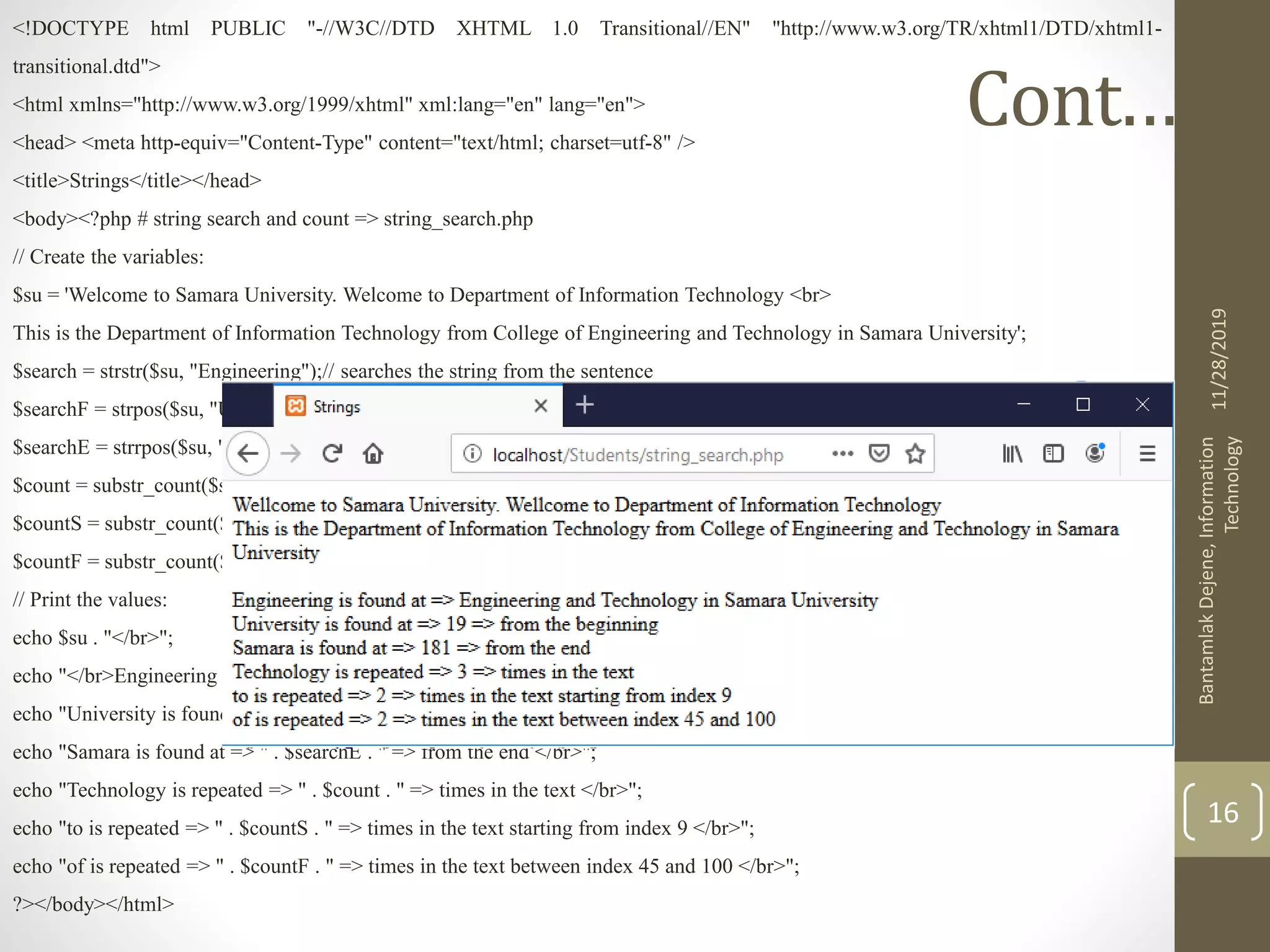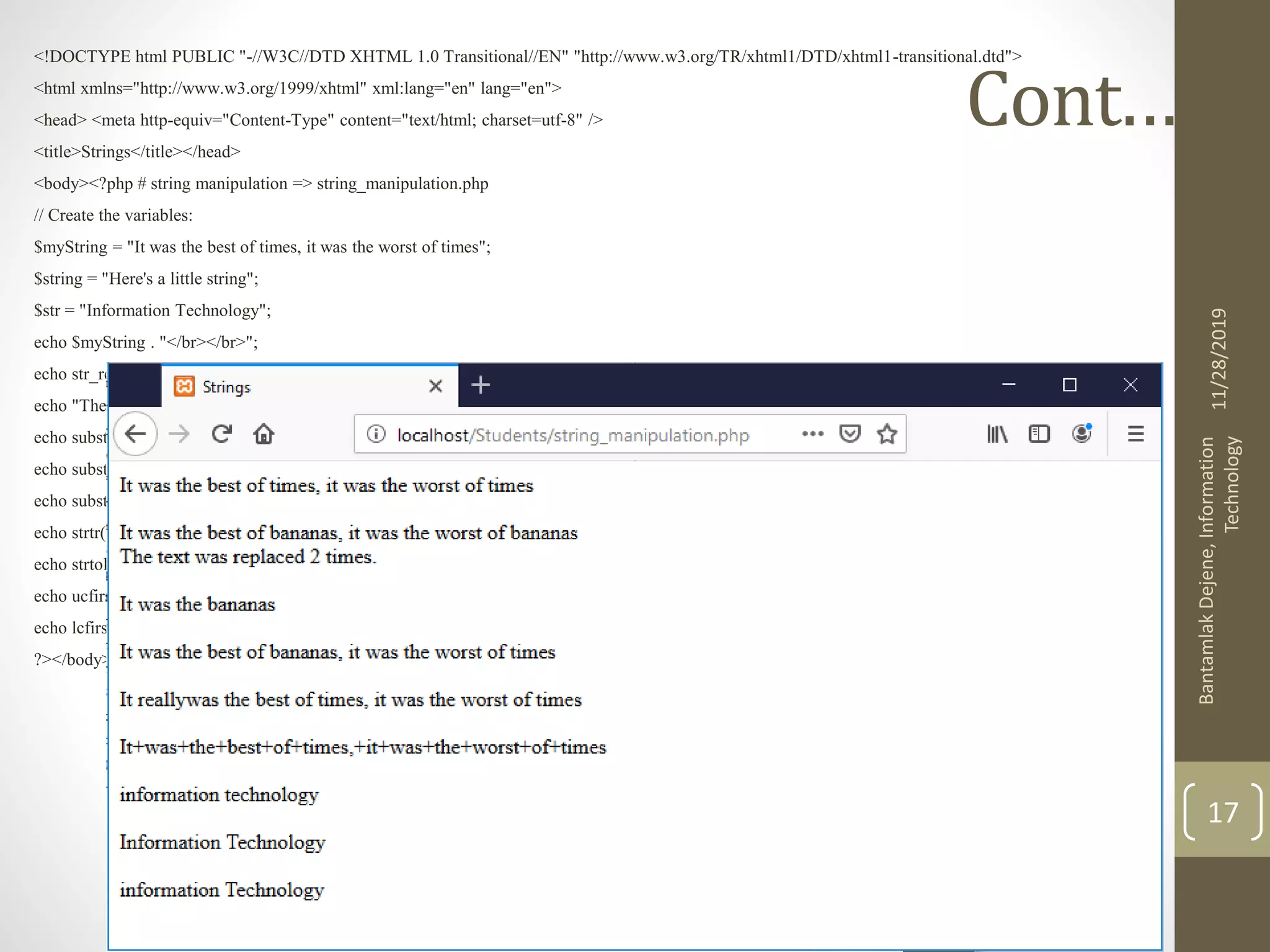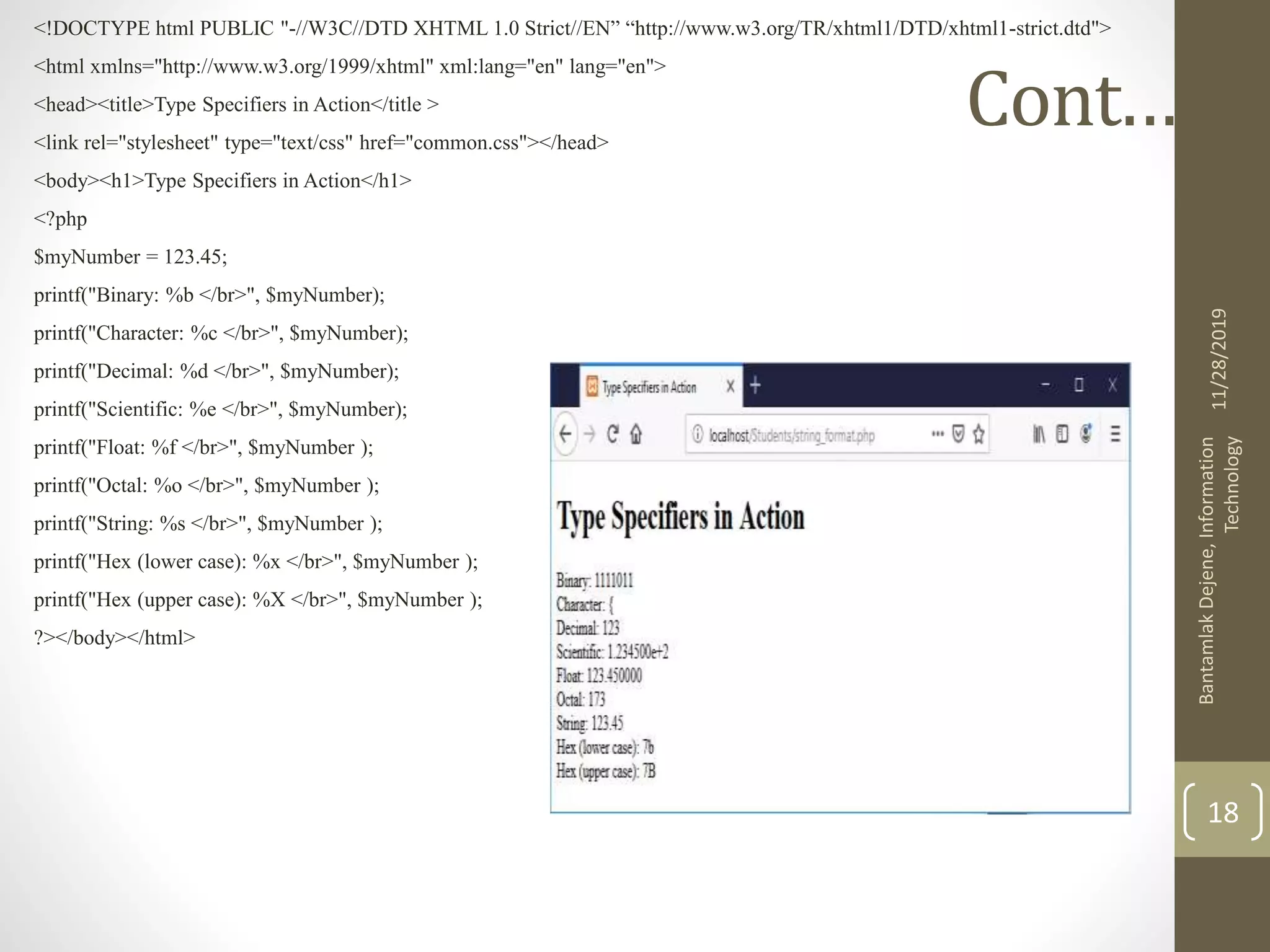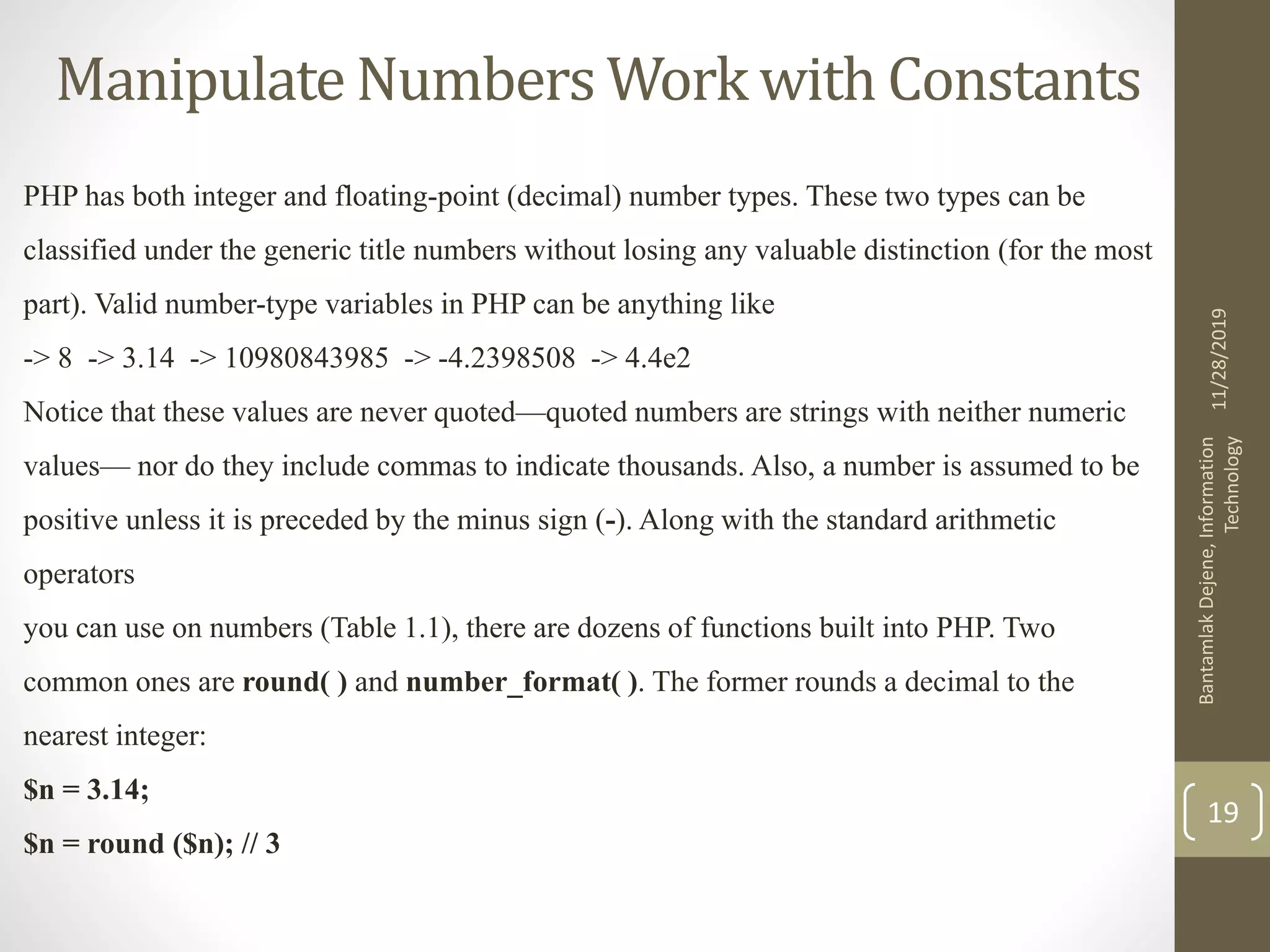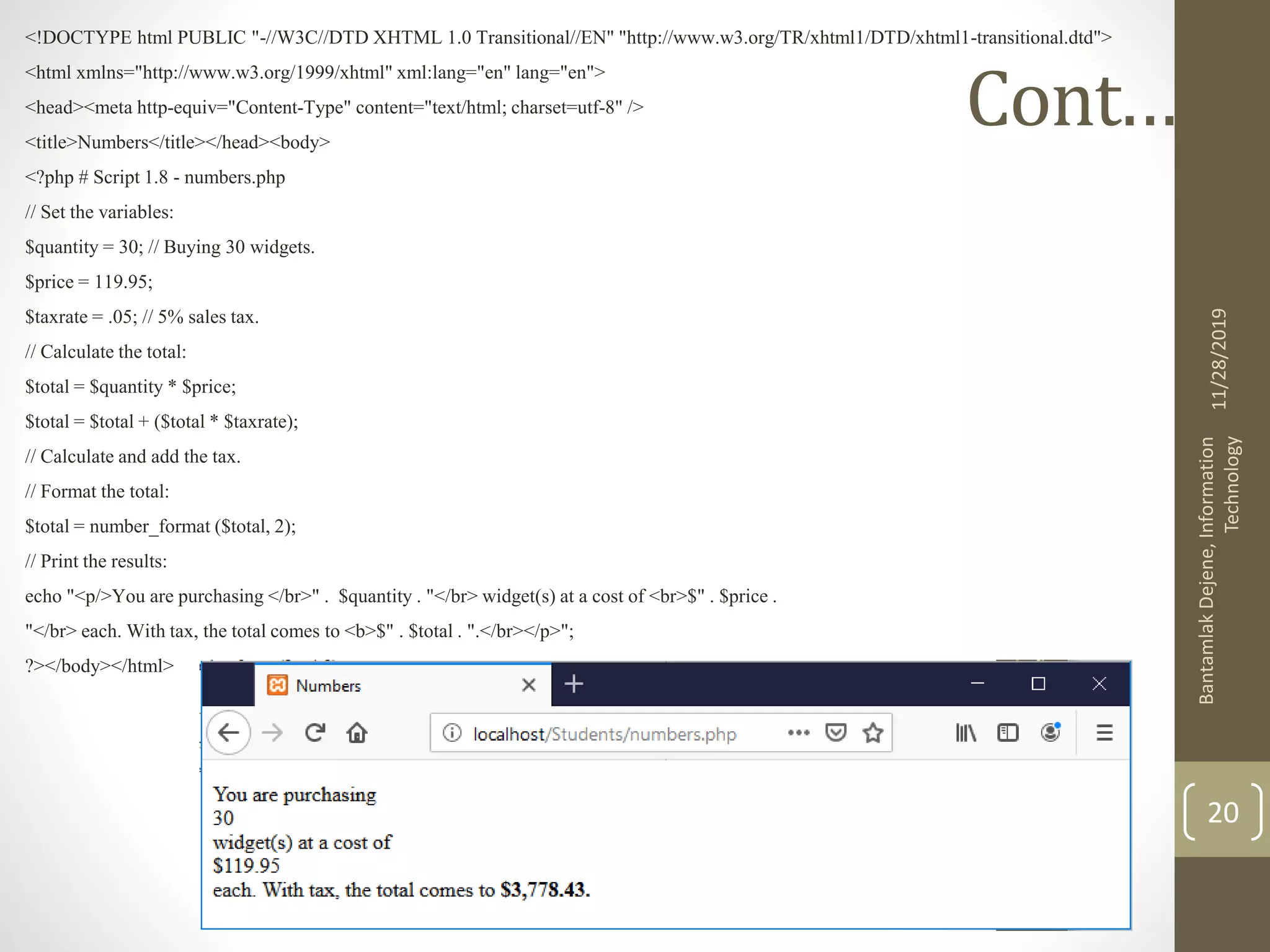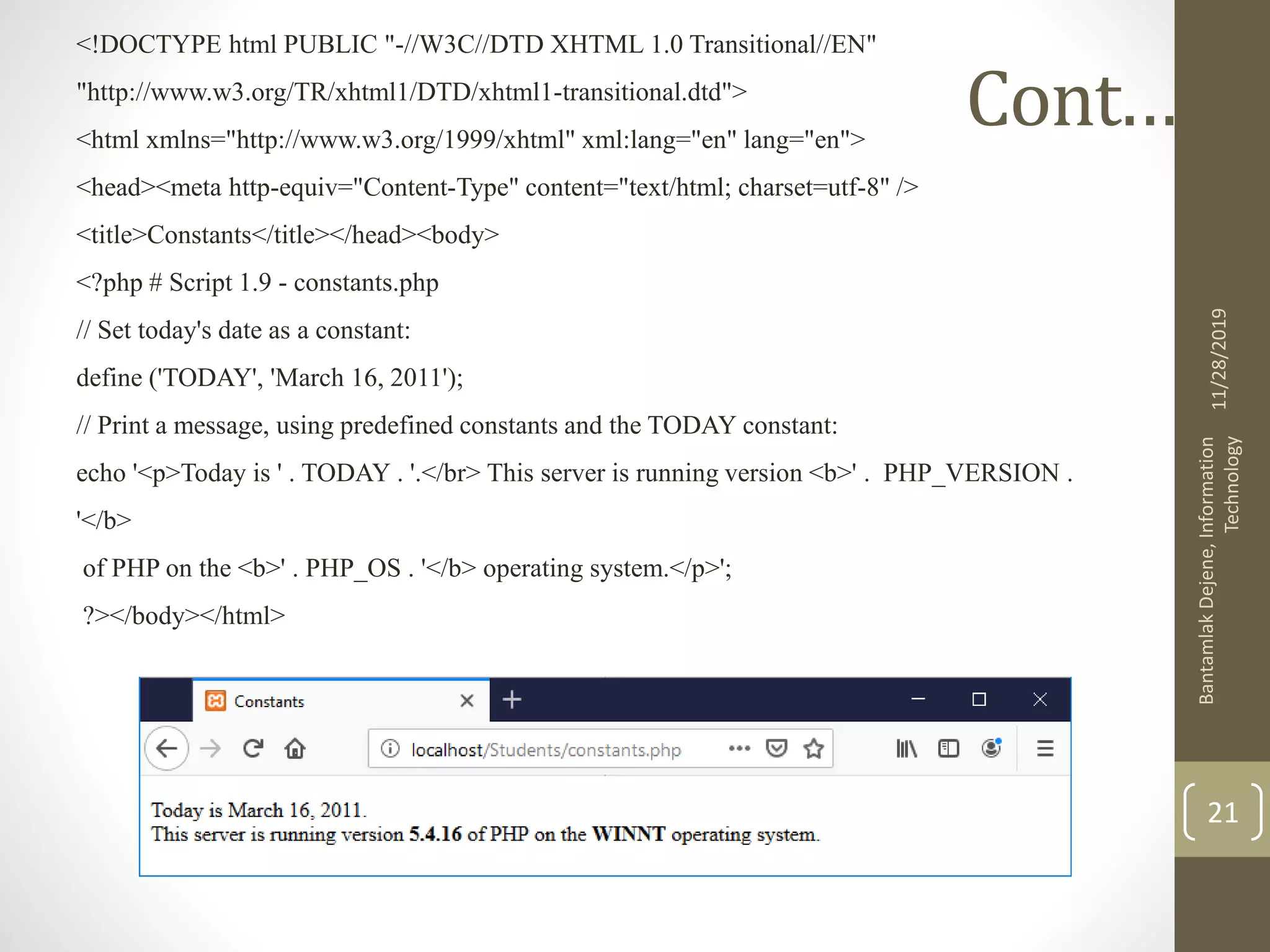The document provides an introduction to server-side scripting and dynamic web development. It discusses how PHP and MySQL are commonly used to create dynamic websites that can respond to different parameters, integrate user logins and databases. The document then explains some of the basic syntax of PHP, how to send data to the web browser using echo, and how to write comments. It also covers variables, strings, and other PHP fundamentals.
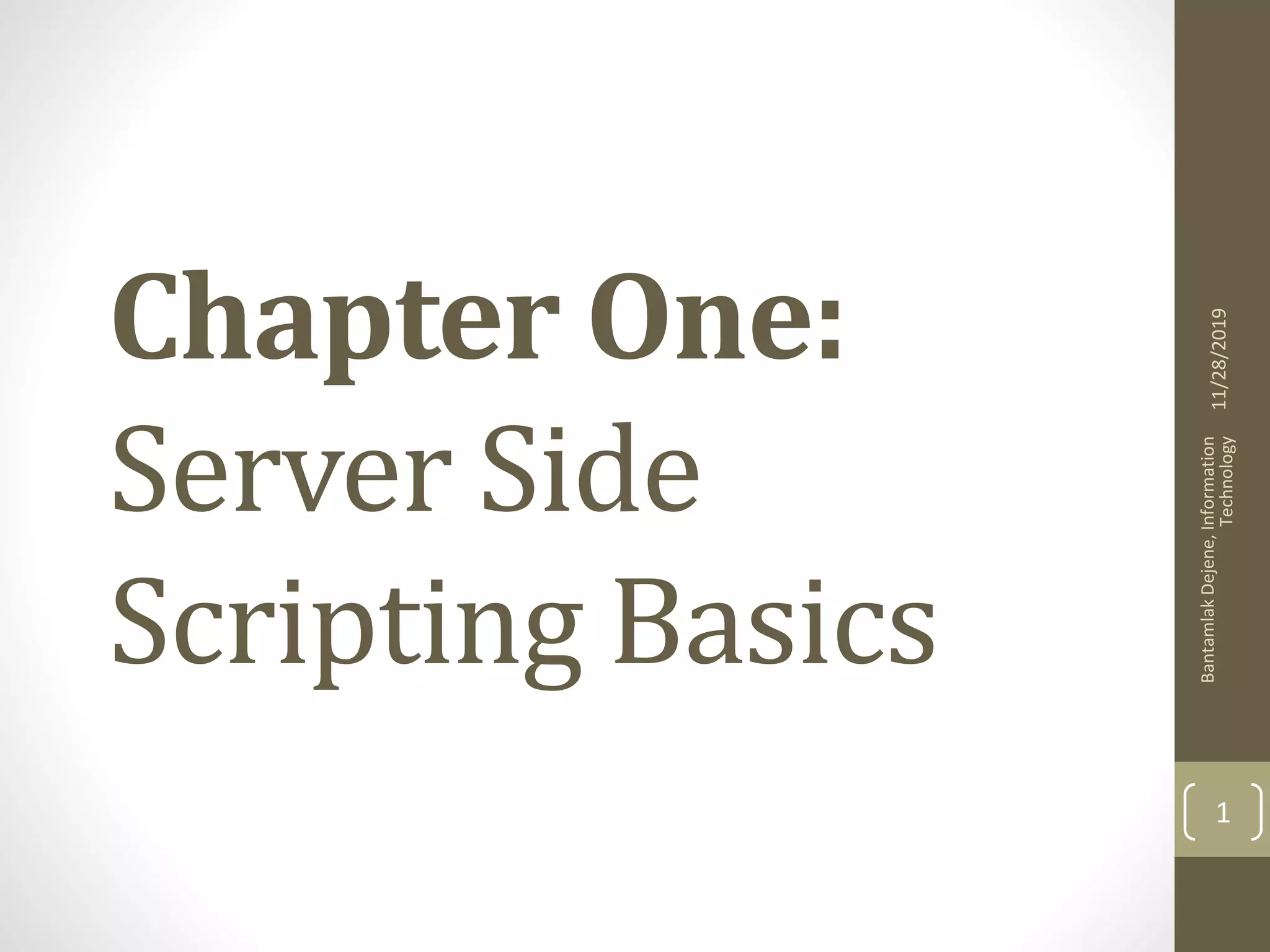
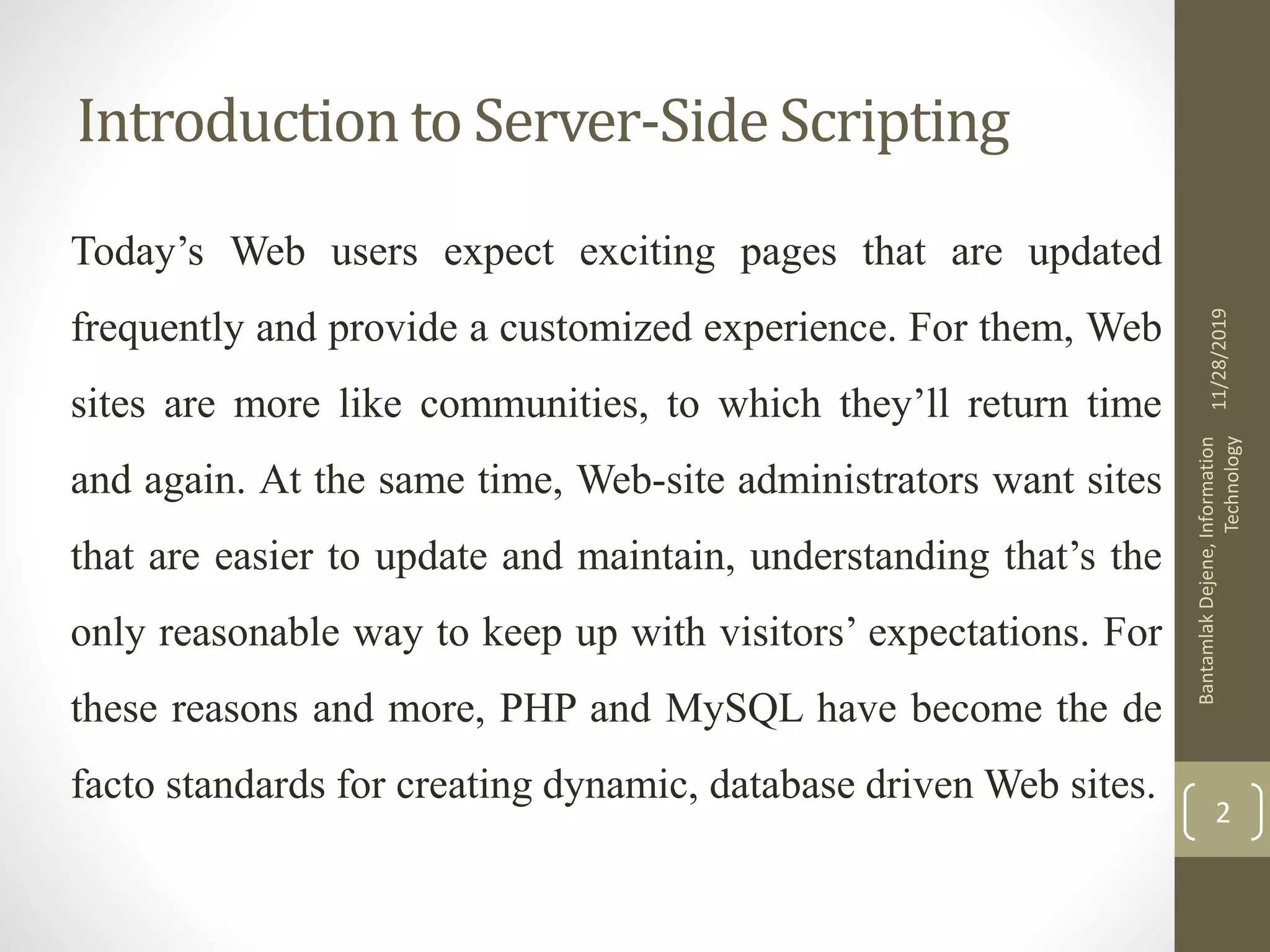
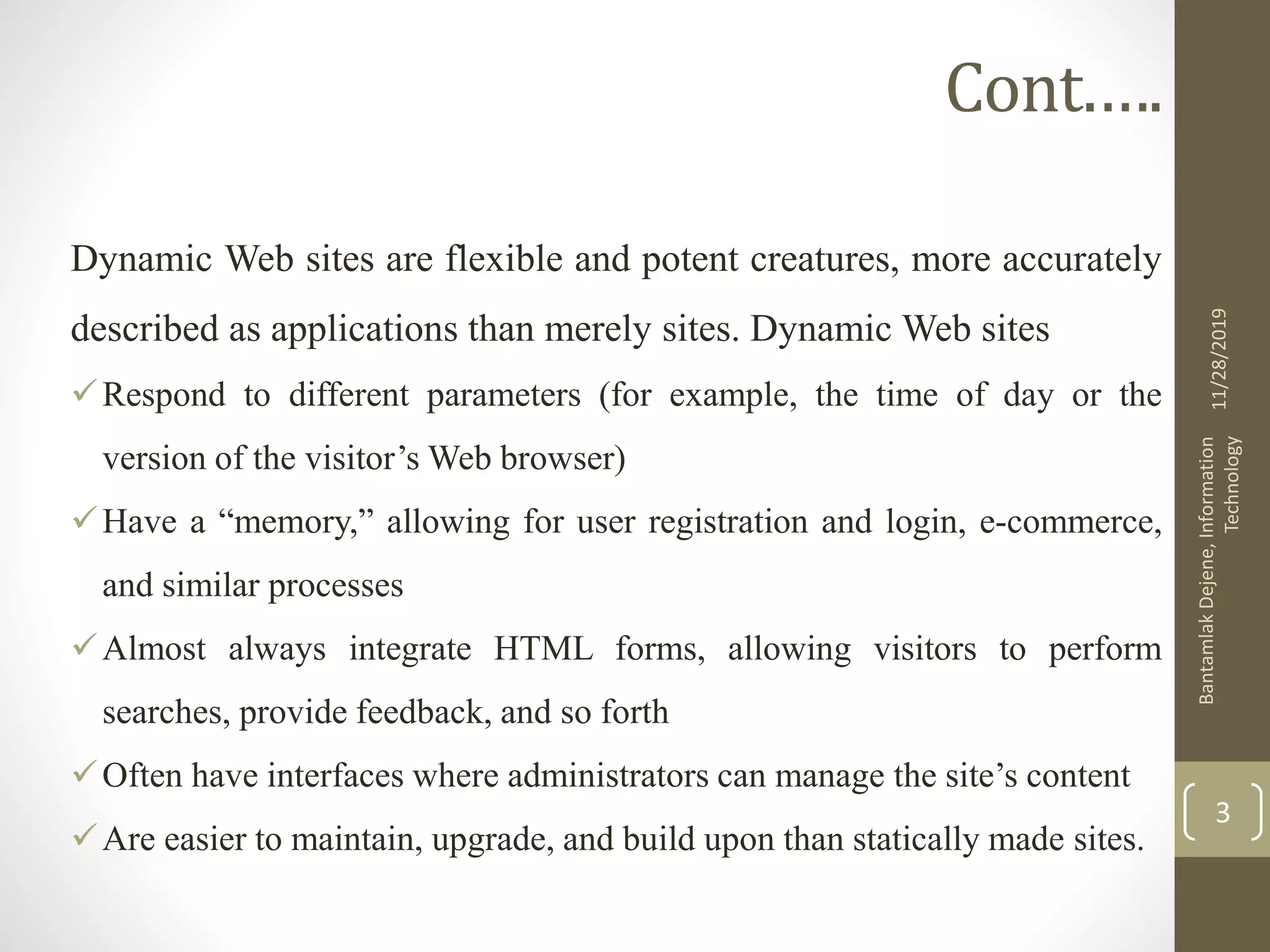
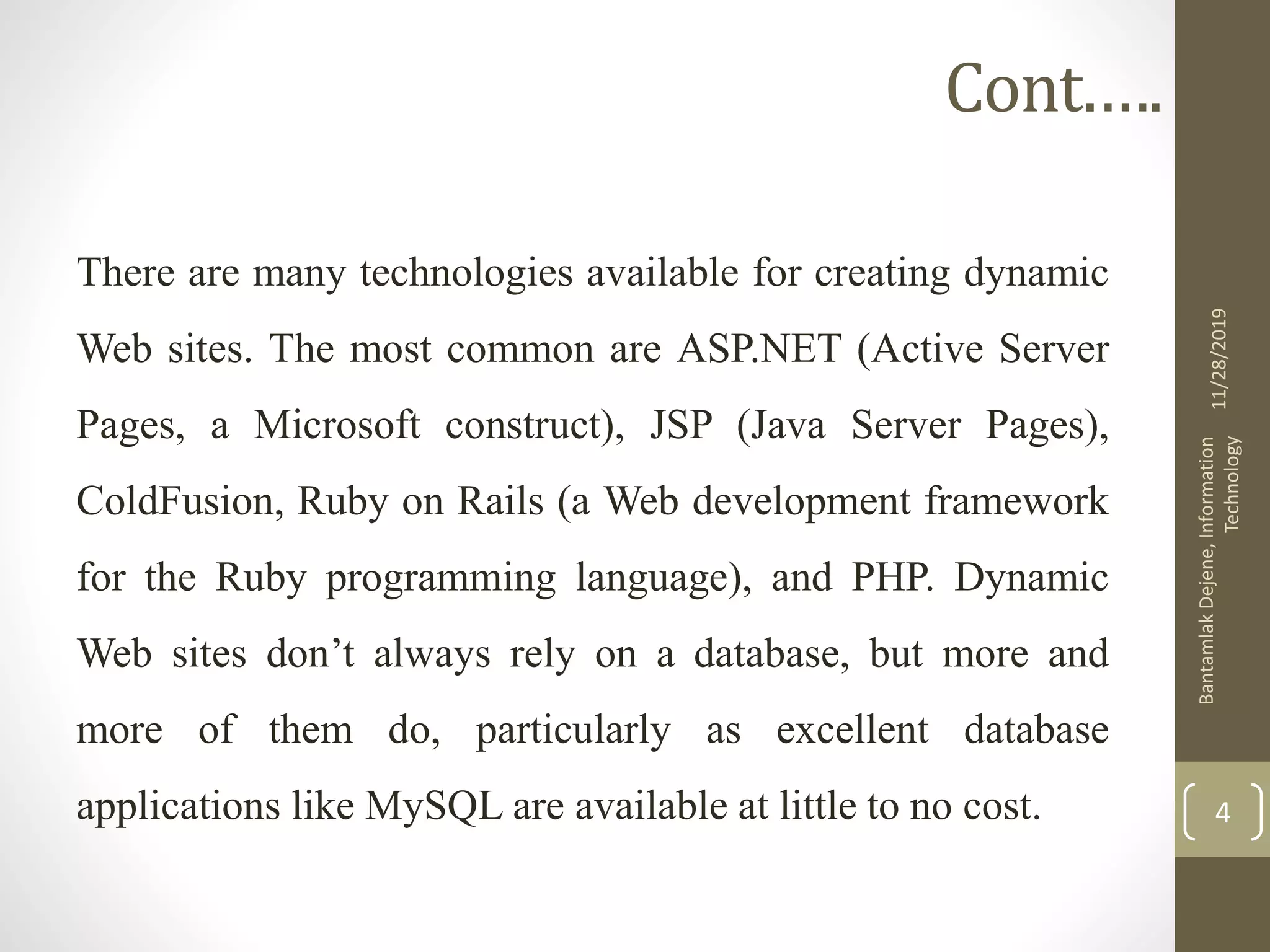
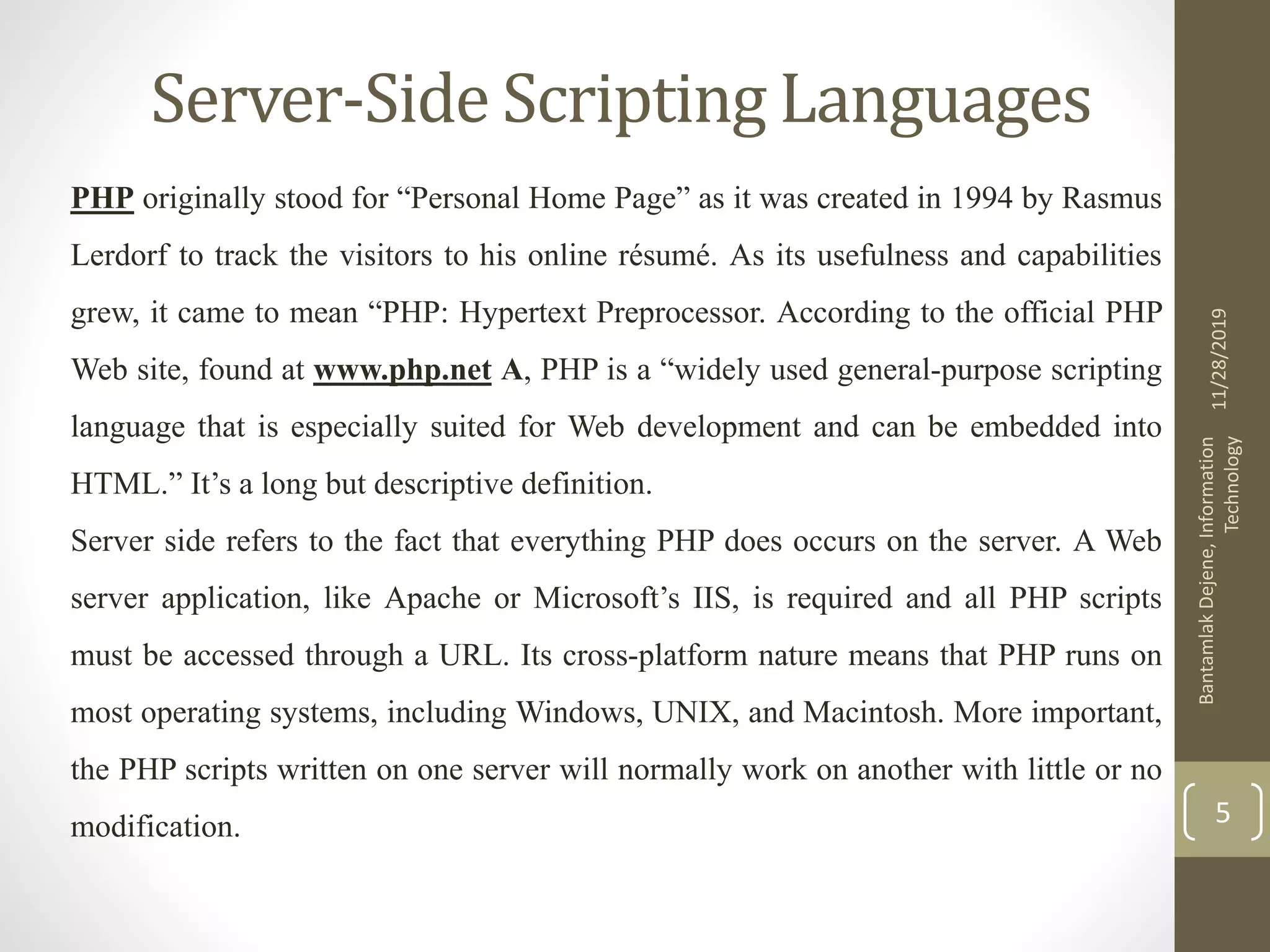
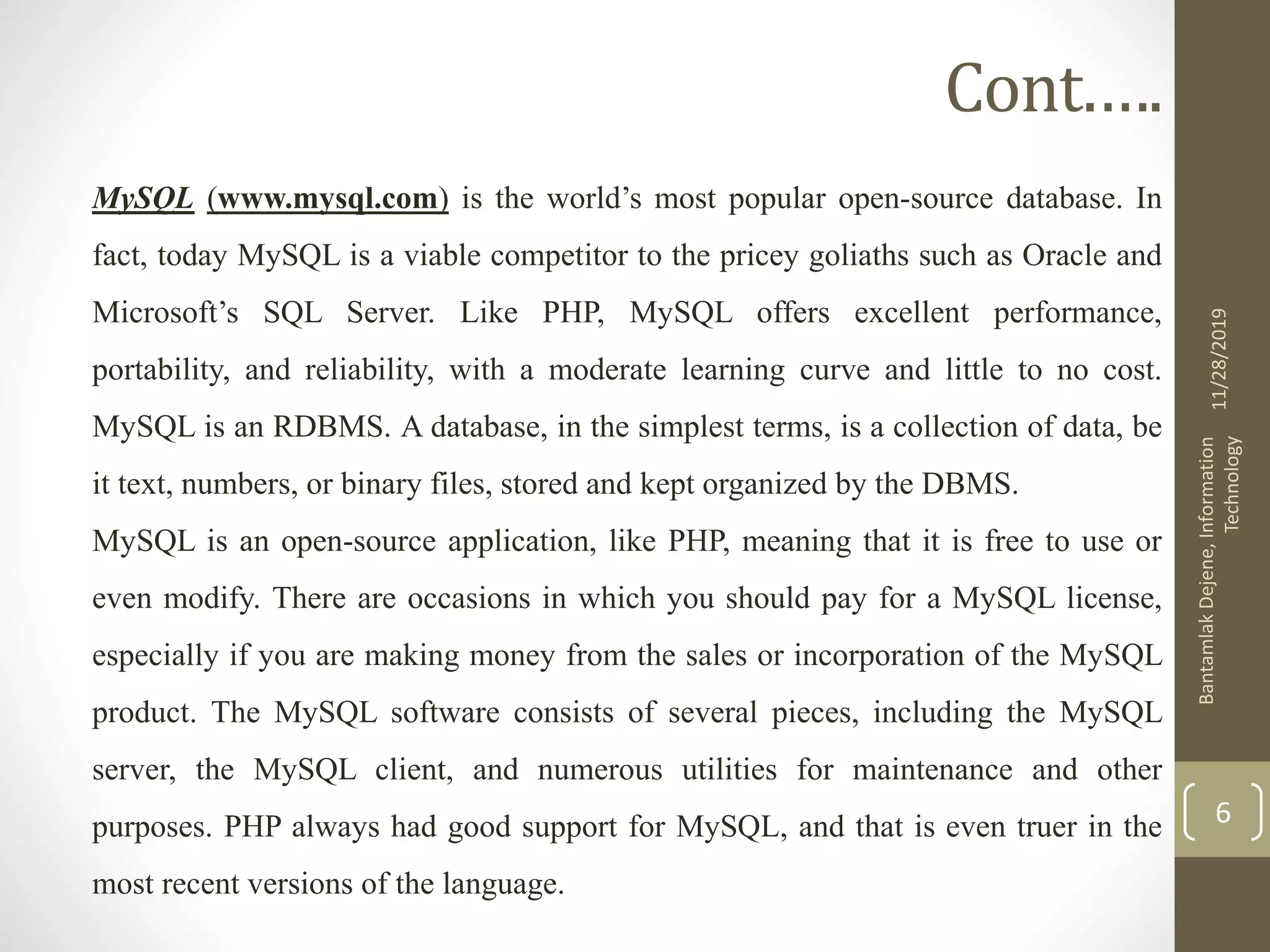
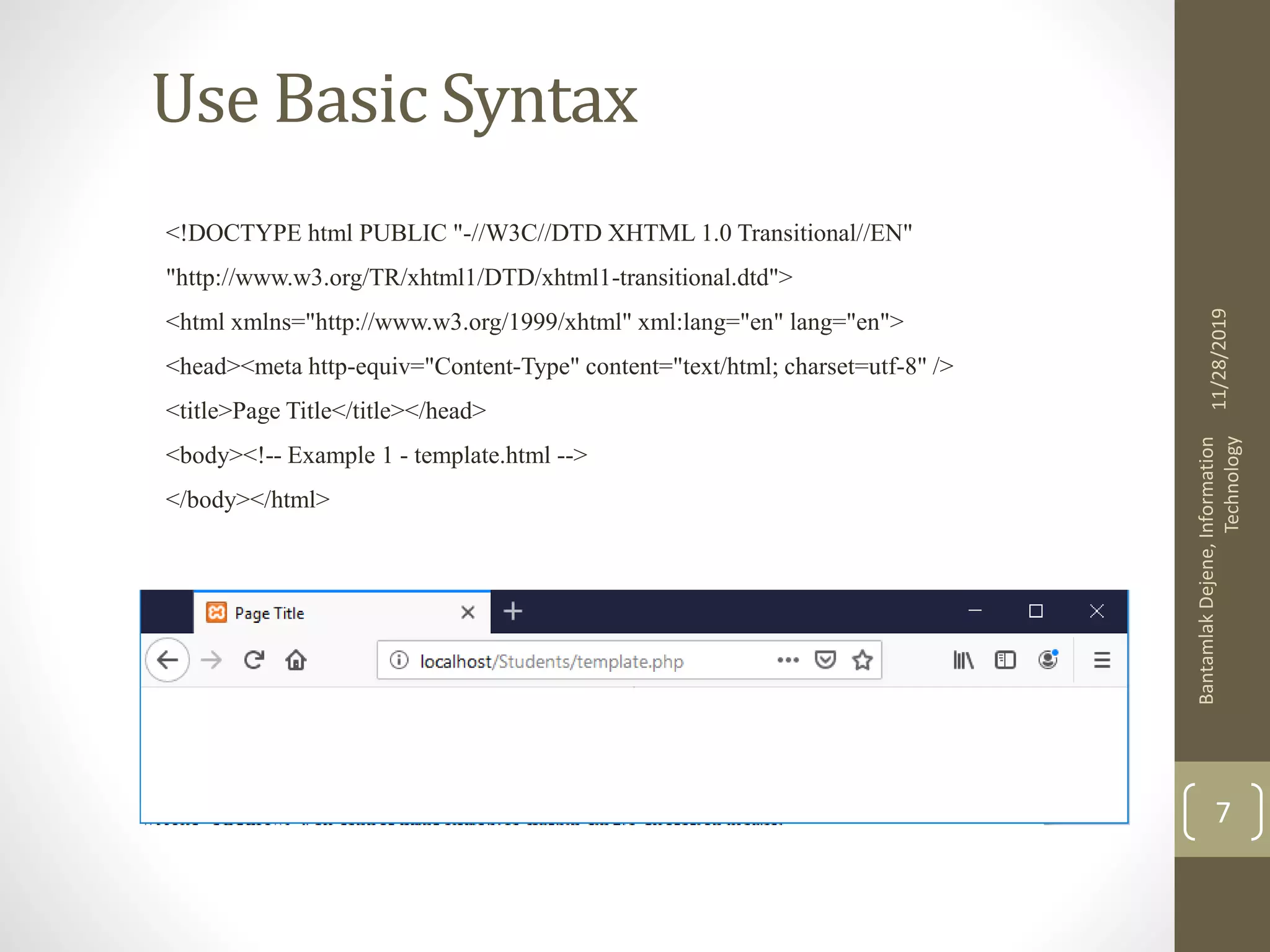
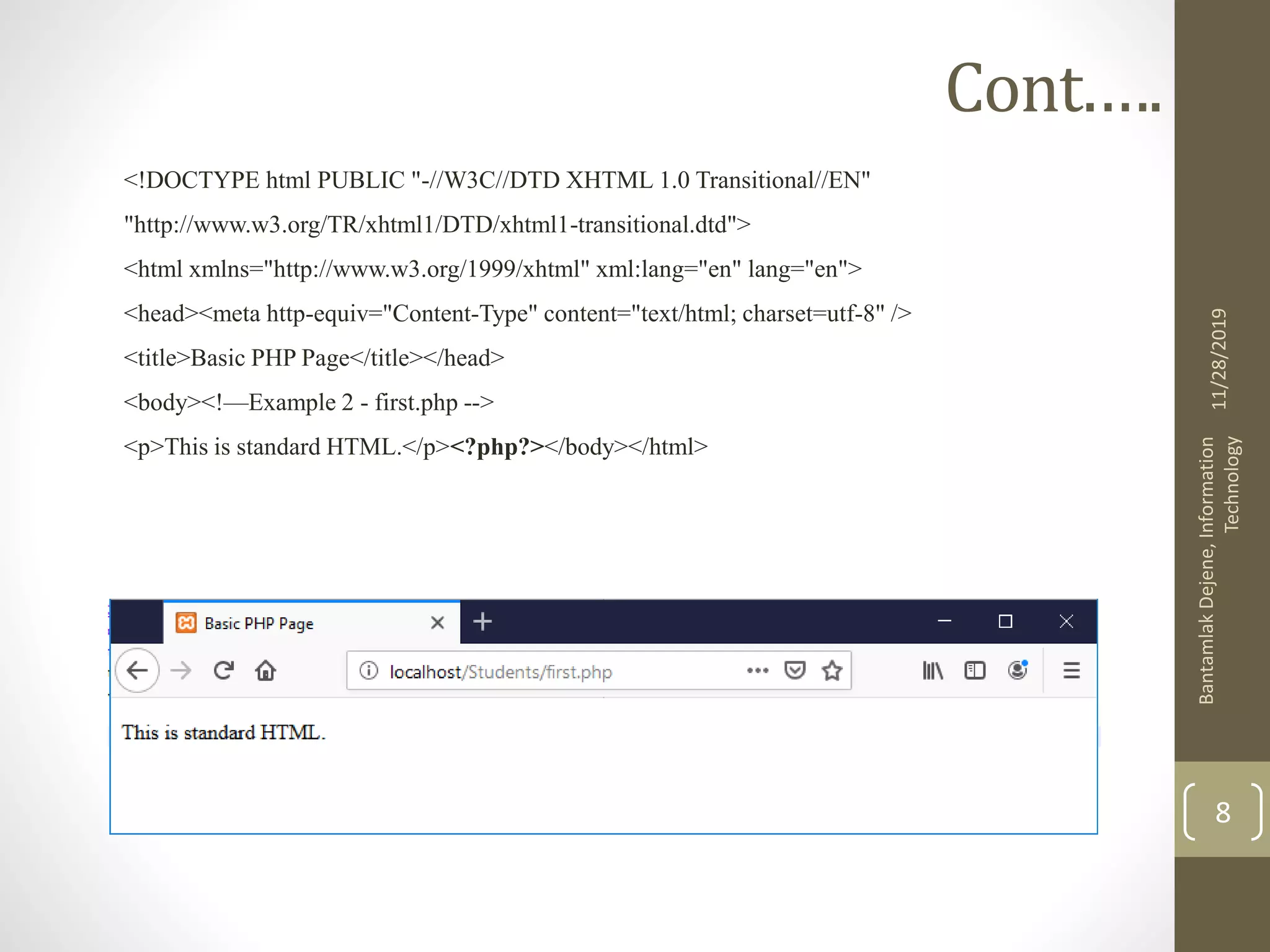
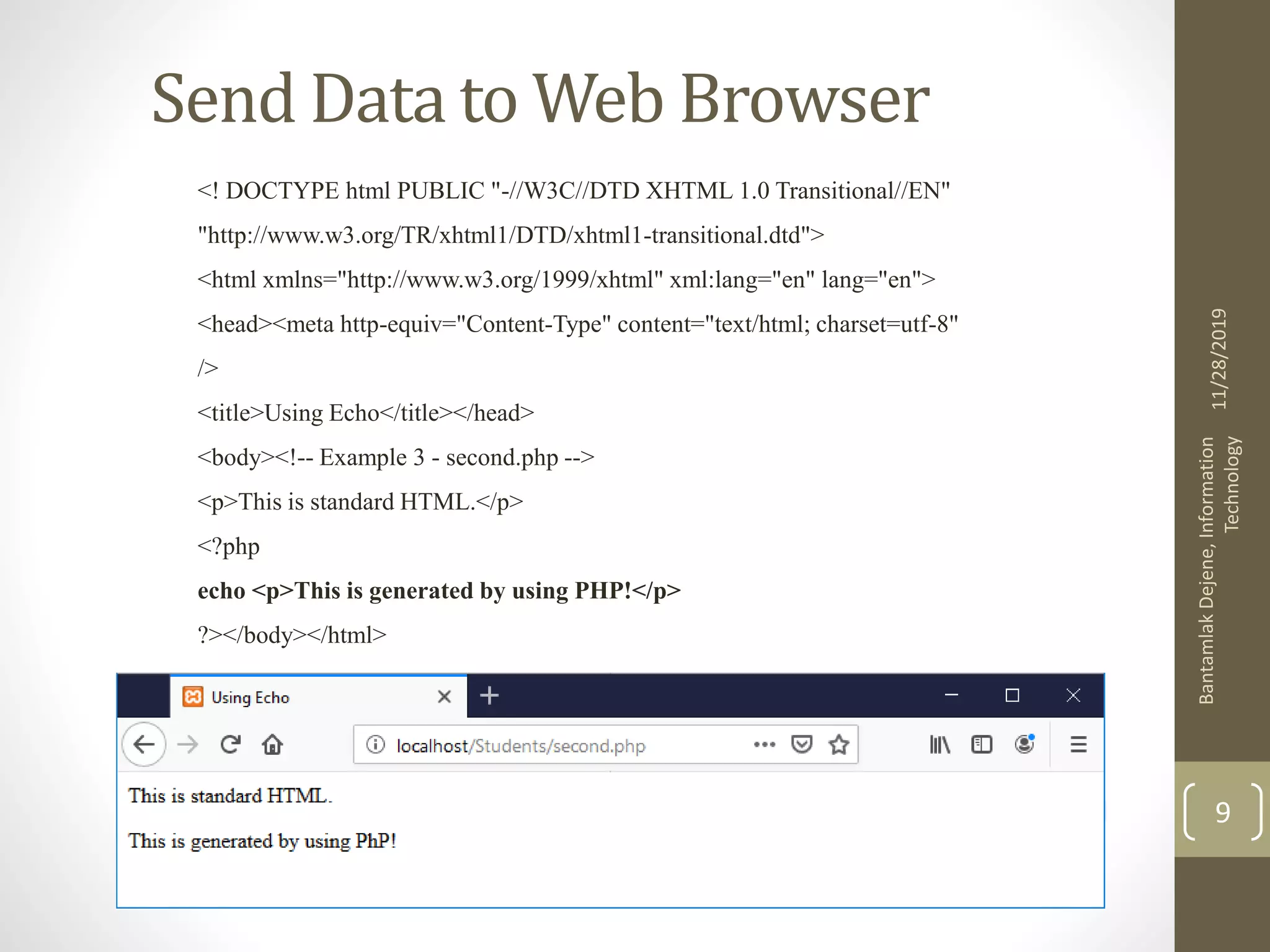
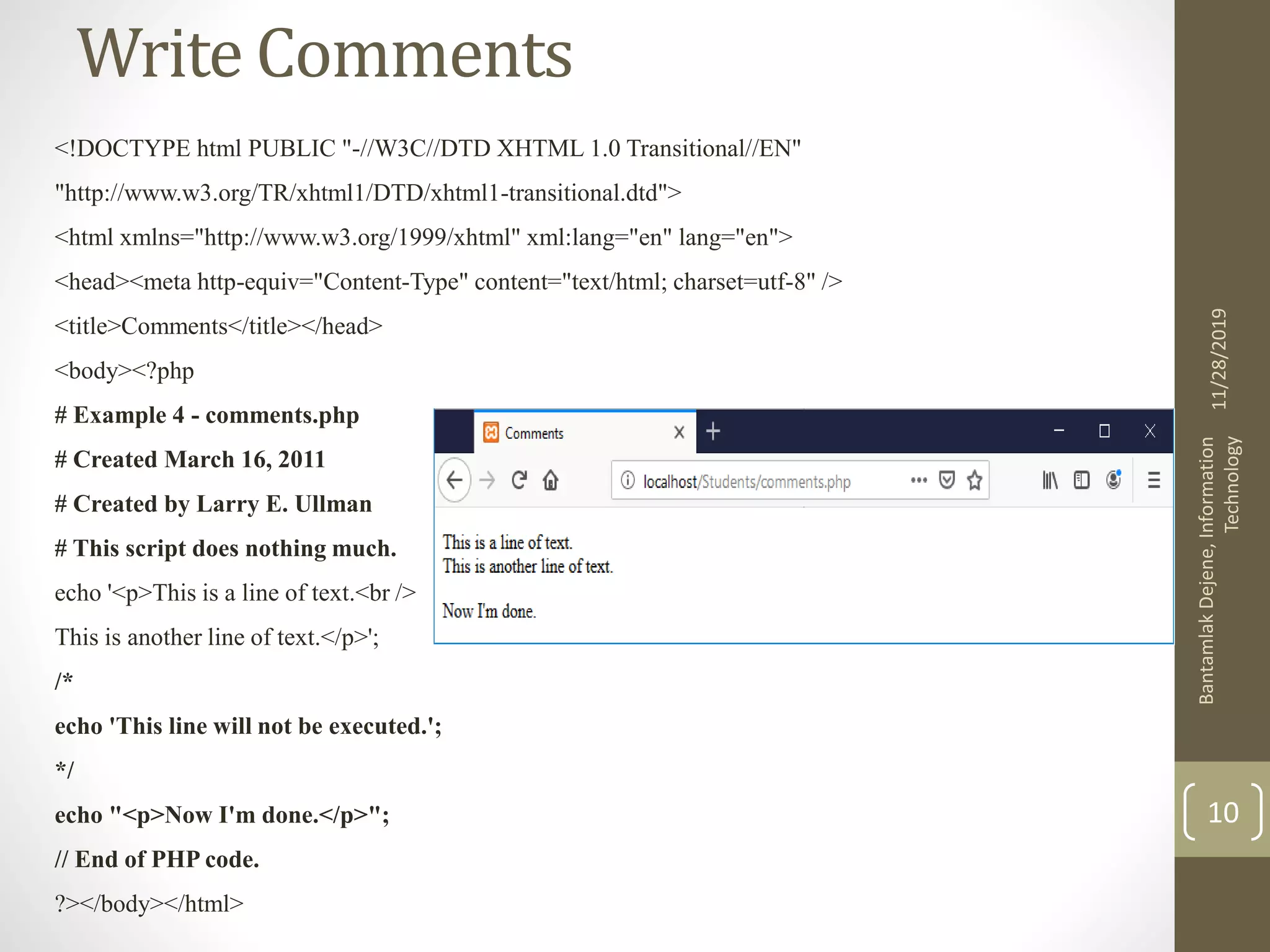
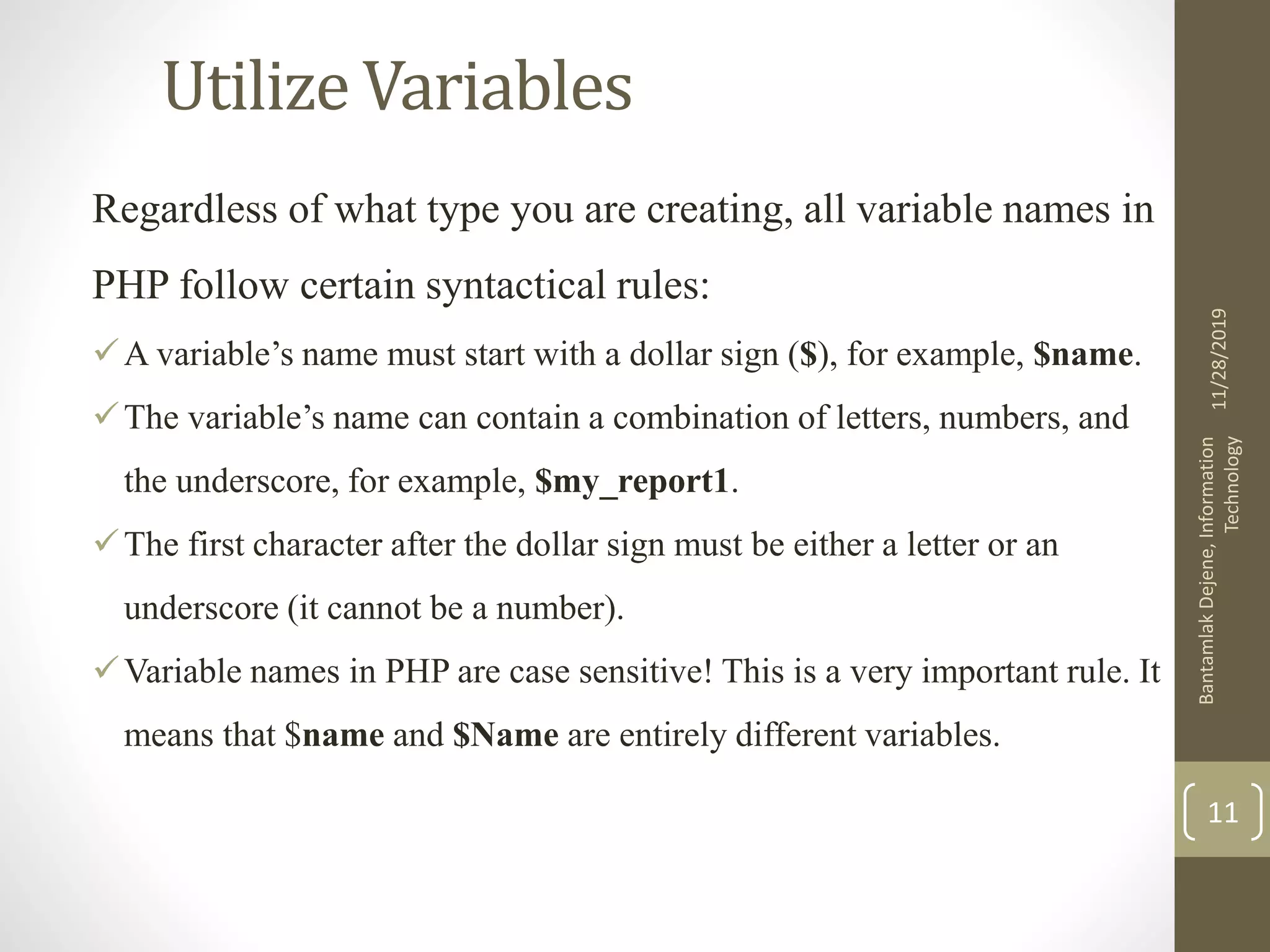
![Cont.…. <!DOCTYPE html PUBLIC "-//W3C//DTD XHTML 1.0 Transitional//EN“ "http://www.w3.org/TR/xhtml1/DTD/xhtml1-transitional.dtd"> <html xmlns="http://www.w3.org/1999/xhtml" xml:lang="en" lang="en"> <head><meta http-equiv="Content-Type" content="text/html; charset=utf-8" /> <title>Predefined Variables</title></head> <body><?php # Example 5 - predefined.php // Create a shorthand version of the variable names: $file = $_SERVER['SCRIPT_FILENAME']; $user = $_SERVER['HTTP_USER_AGENT']; $server = $_SERVER['SERVER_SOFTWARE']; // Print the name of this script: echo "<p>You are running the file:<br /><b>$file</b>.</p>n"; // Print the user's information: echo "<p>You are viewing this page using:<br /><b>$user</b></p>n"; // Print the server's information: echo "<p>This server is running: <br /><b>$server</b>.</p>n"; ?></body></html> 11/28/2019 BantamlakDejene,Information Technology 12](https://image.slidesharecdn.com/phpch-1serversidescriptingbasics-191128093408/75/server-side-scripting-basics-12-2048.jpg)
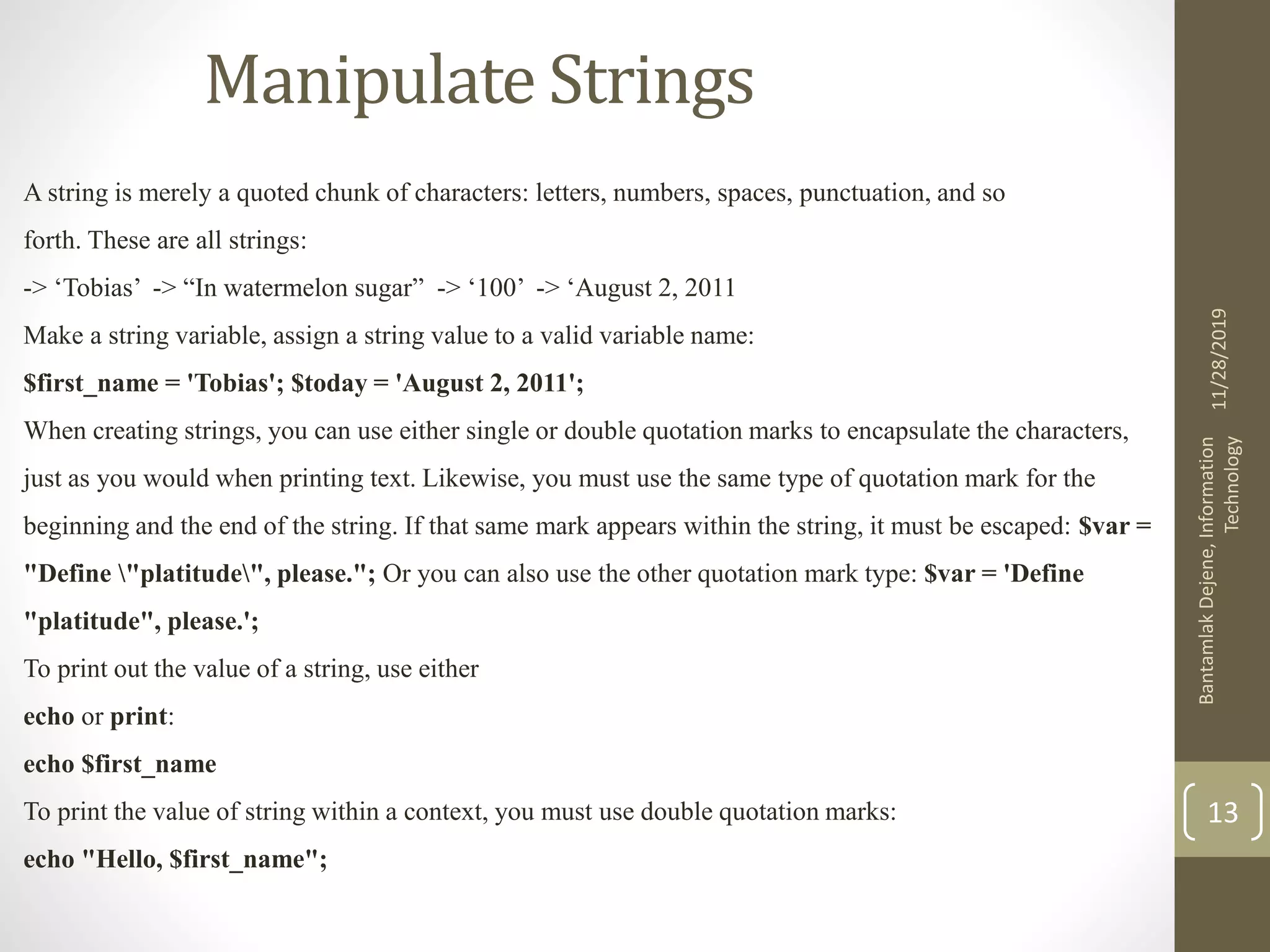
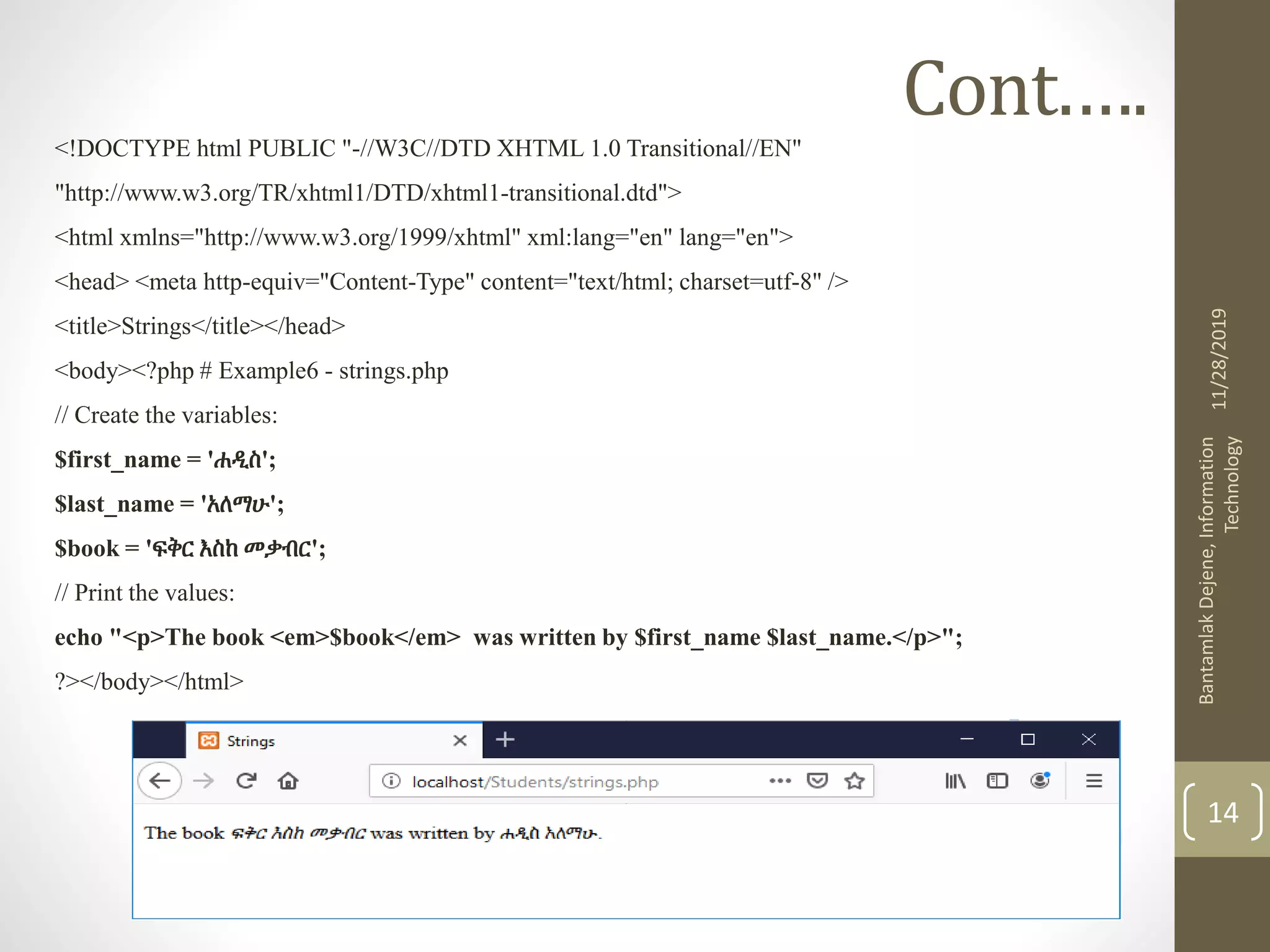
![Cont.…. <!DOCTYPE html PUBLIC "-//W3C//DTD XHTML 1.0 Transitional//EN" "http://www.w3.org/TR/xhtml1/DTD/xhtml1-transitional.dtd"> <html xmlns="http://www.w3.org/1999/xhtml" xml:lang="en" lang="en"> <head> <meta http-equiv="Content-Type" content="text/html; charset=utf-8" /> <title>Strings</title></head> <body><?php # string concatenation, length and word counting => string_concat.php // Create the variables: $favoriteAnimal = 'cat'; $myArray ['age']= '28'; $about = "My age"; $len = strlen($about); $word = str_word_count("My favorite animals are {$favoriteAnimal}s"); // Print the values: echo "My favorite animals are {$favoriteAnimal}s => There are {$word} words in this sentence</br>"; // using curly bracket echo $about . " is " . $myArray["age"] . "</br>"; // using . operator echo "The length of " . $about . " is " . $len; ?></body></html> 11/28/2019 BantamlakDejene,Information Technology 15](https://image.slidesharecdn.com/phpch-1serversidescriptingbasics-191128093408/75/server-side-scripting-basics-15-2048.jpg)
